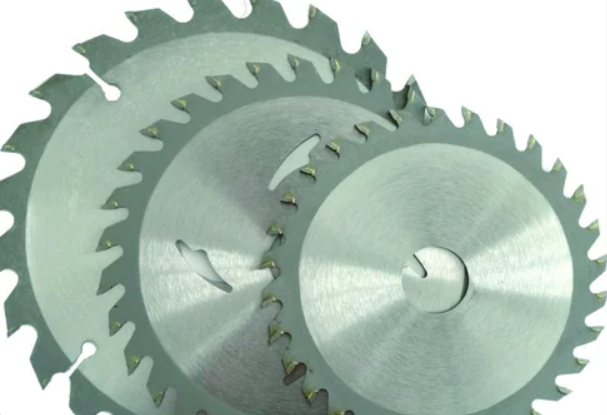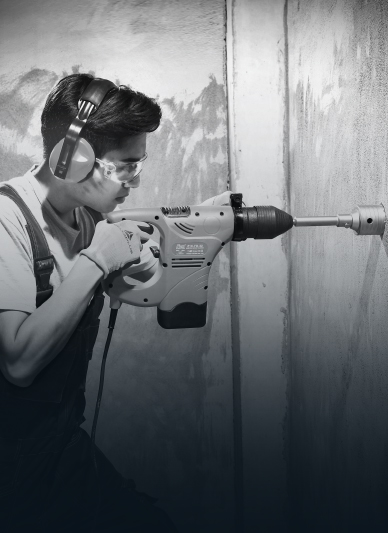What is a TCT Circular Saw Blade?
A TCT Circular Saw Blade (Tungsten Carbide Tipped Circular Saw Blade) is a high-performance cutting tool featuring carbide-tipped teeth. Unlike traditional steel saw blades, the teeth of a TCT blade are made from tungsten carbide — a material known for its extreme hardness and wear resistance — and are fixed onto the steel body through welding or brazing. This design ensures the blade remains sharp even when cutting harder materials, significantly enhancing both cutting efficiency and service life.

TCT Circular Saw Blade vs. Conventional Circular Saw Blade: Key Differences
| Comparison Item |
TCT Circular Saw Blade |
Conventional Steel Saw Blade |
| Tooth Material |
Tungsten carbide tips |
High-speed steel (HSS) |
| Wear Resistance |
Very high, suitable for long-term use |
Moderate, wears down quickly |
| Cutting Precision |
High, delivers smooth and clean cuts |
Lower, prone to burrs and rough edges |
| Applicable Materials |
Wood, metals, plastics, composites |
Mainly soft materials (e.g., wood, plastic) |
| Service Life |
Long, can be resharpened multiple times |
Short, requires frequent replacement |
| Cost |
Higher upfront, cost-effective in long run |
Lower price, but frequent replacement |
From the comparison above, it is clear that TCT outperform ordinary steel blades in durability, cutting accuracy, and versatility, making them especially suitable for heavy-duty and high-precision cutting requirements.
Why Choose a TCT Circular Saw Blade?
1.Longer Service Life – Tungsten carbide tips offer exceptional hardness and wear resistance, reducing replacement frequency and lowering long-term costs.
2.Higher Cutting Efficiency – TCT blades support high-speed cutting, minimizing material waste and improving productivity.
3.Broader Applicability – Suitable not only for wood but also for metals, plastics, aluminum profiles, and composite materials, covering a wide range of industrial applications.
4.More Accurate Cutting – Delivers clean, smooth cuts with minimal finishing required, particularly beneficial for precision manufacturing.
What Materials Can TCT Circular Saw Blades Cut?
Thanks to their outstanding hardness and wear resistance, TCT are highly versatile and can be used on a wide range of materials, including but not limited to:
Wood (solid wood, plywood, MDF, etc.)
Metals (aluminum, copper, mild steel, and other non-ferrous metals)
Plastics (PVC, acrylic, nylon, etc.)
Composites (carbon fiber, glass fiber-reinforced materials)
Different materials require different tooth geometries and cutting angles to achieve the best performance.
Advantages and Disadvantages of TCT Circular Saw Blades
Advantages
High Wear Resistance: Tungsten carbide tips last 5–10 times longer than ordinary steel blades.
Efficient Cutting: Suitable for high-speed cutting, improving production efficiency.
Multi-Material Capability: One blade can cut various materials, reducing the need for frequent blade changes.
Resharpenable: Can be re-sharpened after wear, extending service life.
Disadvantages
Higher Initial Cost: More expensive than conventional blades, though more economical in the long run.
Higher Equipment Requirements: Requires high-power saw machines; insufficient speed may lead to poor cutting performance.
Strict Maintenance Needs: Must be cleaned and sharpened regularly, otherwise cutting quality may deteriorate.
Maintenance, Repair, and Installation Guide for TCT Circular Saw Blades
1. Routine Maintenance
Cleaning: After each use, remove resin, metal chips, and other residues to prevent corrosion.
Lubrication: When cutting metals, use cutting fluid to reduce friction and overheating.
Inspection: Regularly check teeth for wear or chipping; re-sharpen or replace in time.
2. Repair and Refurbishment
Sharpening: When dull, use a professional tooth-grinding machine to restore sharpness.
Tip Replacement: Damaged individual tips can be replaced separately, reducing the cost of replacing the entire blade.
3. Installation Guidelines
Match Speed: Ensure the blade specifications match the saw's operating speed to avoid overspeeding.
Secure Fixing: Use appropriate flanges and spacers to prevent loosening.
Correct Direction: Ensure tooth orientation matches the saw's rotation direction.
Application Scenarios and Working Principle of TCT Circular Saw Blades
Application Scenarios
Woodworking: Furniture production, flooring, and door/window processing.
Metal Processing: Aluminum profiles and pipe cutting.
Construction Industry: Composite boards and PVC pipes.
Automotive Manufacturing: Precision cutting of interior parts and metal frames.
Working Principle
A TCT works through high-speed rotation, using the hardness and sharpness of tungsten carbide tips to cut materials. Tooth design (e.g., alternate top bevel teeth, trapezoidal teeth, etc.) directly affects cutting efficiency and surface finish, with different geometries suited to different materials.
How to Choose the Right TCT Circular Saw Blade for Your Project
Identify Cutting Material: Different materials require different tooth designs (e.g., more teeth for wood, fewer teeth for metals).
Select Proper Diameter: Larger diameters are better for thick materials; smaller diameters suit fine cutting.
Consider Tooth Count: More teeth yield finer cuts; fewer teeth provide better chip removal, ideal for fast cutting.
Match Machine Parameters: Ensure blade speed and bore size are compatible with the equipment.
Balance Budget and Quality: Choose cost-effective products, avoiding low-quality blades at overly cheap prices.
With exceptional wear resistance, high cutting efficiency, and broad applicability, TCT have become the preferred cutting tools in modern industry. Whether in woodworking, metal processing, or composite material cutting, choosing the right TCT blade can significantly boost efficiency and product quality. Proper usage and maintenance not only maximize blade life but also reduce production costs, making TCT blades a smart choice for both manufacturing and processing industries.








